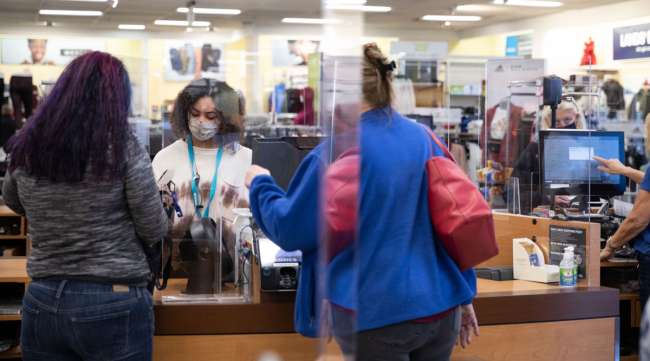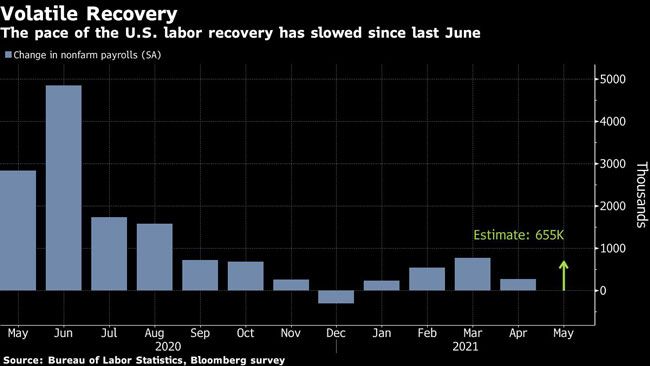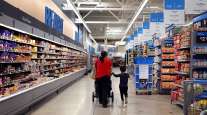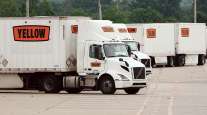Economists Brace for Another Volatile Monthly Jobs Report

[Ensure you have all the info you need in these unprecedented times. Subscribe now.]
Economists, blindsided by a major miss in April’s U.S. employment report, are now ready for any number of surprises.
Estimates for May payrolls growth are wide-ranging — from 335,000 to 1 million, according to a Bloomberg survey. After the previous month’s disappointment, in which employment fell short of all projections, some forecasters have tweaked their models ahead of the June 4 Labor Department report.
“I have a range of models that spit out zero and others that spit out a million,” said Aneta Markowska, chief U.S. financial economist at Jefferies. “That’s the world we live in right now. Honestly, anything is possible.”
It’s no wonder experts are stumped considering how uneven the recovery has been. On one hand, warmer weather across the U.S., large swaths of fully vaccinated adults eager to resume travel and socializing, as well as fewer pandemic restrictions suggest a boon for hiring in the hospitality industry. What’s more, schools are reopening and more people are headed back to the office.

At the same time, employers continue to say they can’t find enough workers to fill positions as health concerns, child care demands and enhanced unemployment benefits may be deterring applicants. There are also ongoing supply chain bottlenecks and a global chip shortage that’s constraining manufacturers and automakers.
These frictions are making forecasting increasingly tricky. In April, payrolls rose 266,000, though economists had expected 1 million. That marked the biggest downside miss on records dating to 1996. In May, the median estimate in the Bloomberg survey is for a gain of 661,000.
Before the pandemic, estimates typically varied by about 20,000 jobs. Now, the so-called standard deviation — or a measure of how spread out the forecasts are — is about 146,000 payrolls.
“You’re going to get these bottlenecks when you’re reopening the economy,” said Brett Ryan, senior U.S. economist at Deutsche Bank Securities Inc. “I wouldn’t be surprised for a 500,000 number, I wouldn’t be surprised for a million number.”
Data on June 3 suggests the labor market continues to gain steam. U.S. businesses added the most private payroll jobs in nearly a year in May, according to ADP Research Institute. At the same time, initial jobless claims last week fell to a fresh pandemic low, dipping below 400,000 for the first time since the start of the pandemic, according to the Labor Department.
RELATED: Jobless Claims Dip Below 400,000 for First Time in Pandemic
But it’s still not clear how long some habits that consumers picked up during lockdown will last, and that could be reflected in the upcoming monthly employment report. For example, transportation and warehouse jobs declined in April, suggesting demand for online shopping is subsiding after surging earlier in the pandemic. Grocery store employment also dropped, which could reflect fewer people are cooking at home.
And last week, manufacturer Honeywell International Inc. said it would lay off nearly 500 workers as it stops production of N95 face masks. The job cuts come after the U.S. Centers for Disease Control dropped mask requirements for fully vaccinated people.
Despite short-term volatility, economists agree that employment is poised to strengthen in the months ahead. The unemployment rate will fall below 5% by the end of the year, according to a Bloomberg survey of economists. Before the pandemic, the jobless rate was less than 4%.
Even so, gains this year might not move the needle for the Federal Reserve, where officials are looking for a broad-based labor market recovery before raising rates and scaling back $120 billion in monthly asset purchases.
“Jobs are down by over 8 million relative to their pre-pandemic level, and the shortfall is over 10 million jobs if we take into account the secular job growth that would have occurred over the past year,” Fed Governor Lael Brainard said June 1. “Today employment remains far from our goal.”
Want more news? Listen to today's daily briefing below or go here for more info:




